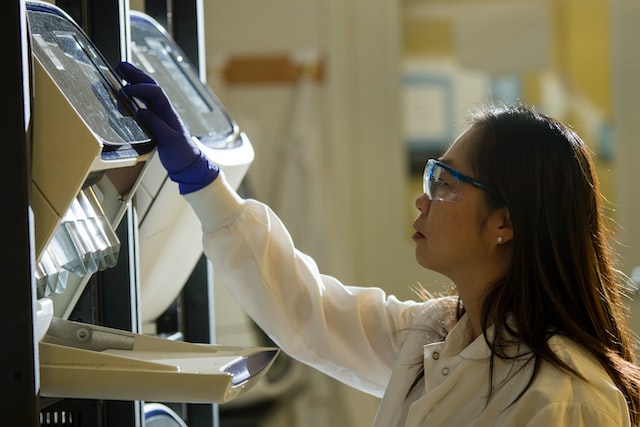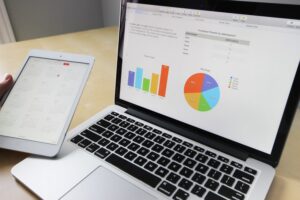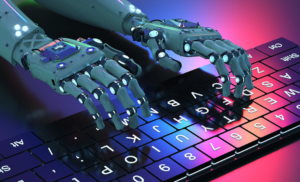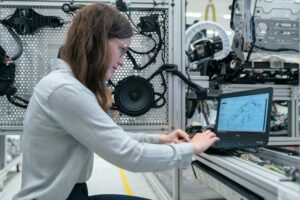Lung diseases can be difficult to diagnose and treat. Even if you know what specific condition someone has, it’s hard to say how their body will respond. Biomarkers make understanding these factors far easier.
Biomarkers are biological signs that provide information about a condition or a patient’s body. With these markers, you can recognize unique disease strands more easily or tell how they might impact a specific patient. Recent research has found that artificial intelligence (AI) can help discover and identify these biomarkers, paving the way for many improvements.
Here’s how AI biomarkers can affect lung disease treatments.
Speeding Treatment Timelines
“AI can detect lung infections a year or two earlier than human analysts”
One of the most important advantages of biomarkers is how they enable faster treatments. Because biomarkers suggest specific conditions, seeing them lets you precisely diagnose lung diseases sooner, letting you treat them more quickly. Biomarkers can indicate needed lung transplants years before conventional means in some situations.
AI takes these benefits a step further by streamlining the biomarker identification process. Machine learning algorithms are highly adept at classification tasks, and the more data they encounter, the better they become at it. As a result, they can analyze medical scans or other tests to recognize biomarkers far faster than a person can.
AI’s precision means these algorithms could spot biomarkers before they’re even evident to doctors. Some studies found that AI can detect lung infection a year or two earlier than human analysts.
Improving Diagnostic Accuracy
AI biomarkers can also help diagnose lung diseases more accurately. Even with today’s medical standards and technology, misdiagnoses are more common than you may think. One study found that one in every 25 cases required reclassification after analyzing them again with different tools.
Computers are often more accurate than humans when it comes to this type of work. AI algorithms can compare a case to vast data sets full of similar instances to identify where it falls with little margin for error. They may also recognize biomarker signals too small for humans to classify confidently.
Of course, AI can still make mistakes, just as human doctors can. However, pairing human experts with these highly accurate initial readings can significantly improve lung disease diagnoses, leading to more effective treatments.
Enabling Personalized Medicine
Another advantage of AI biomarkers is how they help personalize treatments. Because AI offers more precision than many other diagnostic tools, it can discover new biomarkers. These discoveries can help identify more specific patient classes, leading to treatment plans tailored to their unique needs.
“As AI models study more patients, they could keep finding new biomarkers or learn more about the implications of existing ones.”
In a 2019 study, a deep learning model discovered new mesothelioma biomarkers after reviewing biopsy slides from 3,000 patients. These new markers offer more insight into which conditions indicate how patients could respond to various treatments. With that insight, one could make more personalized and, therefore, more effective treatment plans.
As AI models study more patients, they could keep finding new biomarkers or learn more about the implications of existing ones. These advancements would help personalize lung disease treatments more and more, saving lives even in exceptional cases.
Mitigating Hospital Staffing Shortages
Using AI to find lung disease biomarkers could also help overcome staffing shortages. Current predictions hold that the U.S. could be short 98,700 medical and lab technicians and more than 29,000 nurse practitioners by 2025. While this labor strain is a multi-faceted issue with no easy answer, AI’s efficiency could help reduce its impact.
Just as AI gives teachers more time by performing tasks like grading, it can free up more time for medical professionals. As AI analyzes tests for early diagnoses, physicians can focus on other patients. Because these tools also streamline the diagnostic process, doctors also get more time with patients.
As more hospitals use AI more heavily, medical staff will have more time to spend on critical work. This productivity boost will make staffing shortages less impactful, ensuring they don’t compromise patient health.
Potential Concerns With AI in Health Care
“Health care has become the most targeted industry for ransomware, and AI could exacerbate this threat.”
While AI biomarker technology has many advantages, it also raises some concerns. Learning about these potential downsides can help you use AI safely and effectively.
One of the biggest concerns is AI’s accuracy. While these tools are often more accurate than people, they can still cause errors. If one assumes they’re always right and rely too heavily on them, it could lead to misdiagnoses and mistreatment. Human experts should always have the final say and review AI predictions, but it can be easy to become complacent due to these tools’ ease of use.
Security is another issue. Health care has become the most targeted industry for ransomware, and AI could exacerbate this threat because it requires extensive data sets to work properly. An AI training set could contain lots of sensitive patient data for cyber criminals to target. If cybersecurity doesn’t also increase with higher AI usage, it could become a threat.
AI Biomarkers Could Revolutionize Lung Disease Treatment
While some concerns remain, AI biomarkers show a lot of promise. If hospitals and clinics can implement these tools safely, they could make lung disease treatment faster and more effective.
AI biomarkers are still a relatively new technology, so new benefits and use cases will likely emerge. As this technology improves, the medical sector could see substantial gains from adopting it. It could revolutionize lung disease treatment before long.










